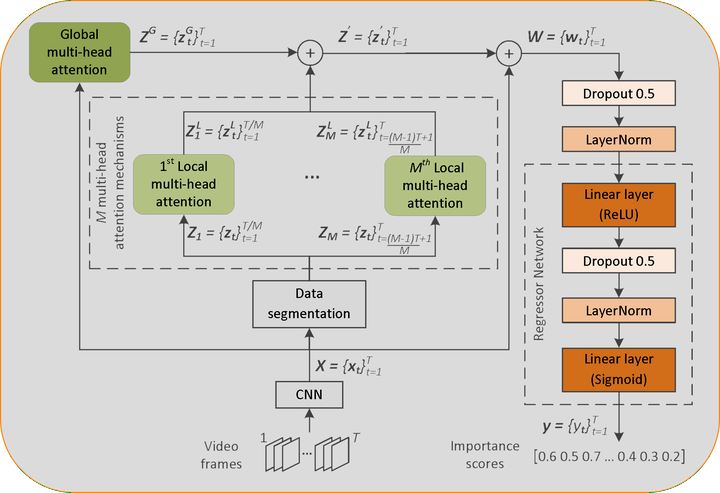Combining Global and Local Attention with Positional Encoding for Video Summarization

Abstract
This paper presents a new method for supervised video summarization. To overcome drawbacks of existing RNN-based summarization architectures, that relate to the modeling of long-range frames' dependencies and the ability to parallelize the training process, the developed model relies on the use of self-attention mechanisms to estimate the importance of video frames. Contrary to previous attention-based summarization approaches that model the frames' dependencies by observing the entire frame sequence, our method combines global and local multi-head attention mechanisms to discover different modelings of the frames' dependencies at different levels of granularity. Moreover, the utilized attention mechanisms integrate a component that encodes the temporal position of video frames - this is of major importance when producing a video summary. Experiments on two datasets (SumMe and TVSum) demonstrate the effectiveness of the proposed model compared to existing attention-based methods, and its competitiveness against other state-of-the-art supervised summarization approaches. An ablation study that focuses on our main proposed components, namely the use of global and local multi-head attention mechanisms in collaboration with an absolute positional encoding component, shows their relative contributions to the overall summarization performance.